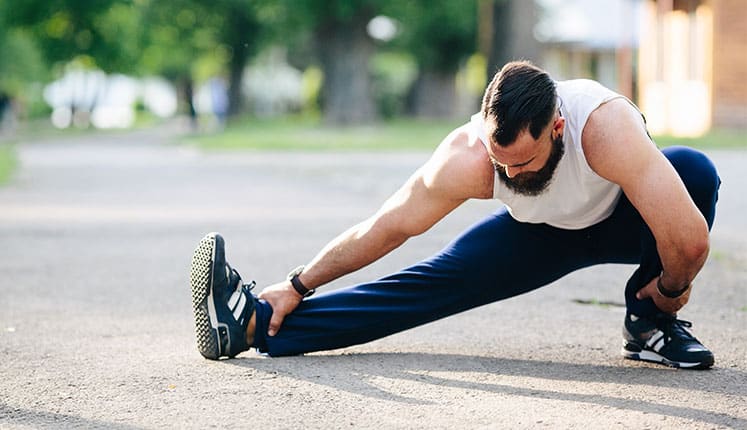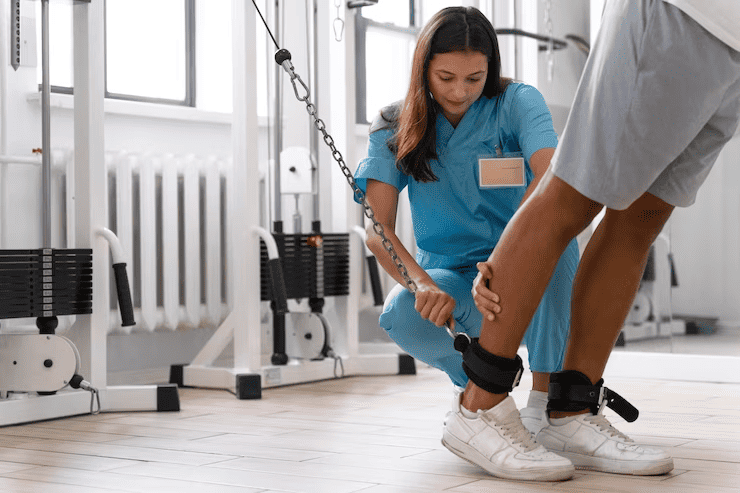Discover The Best Sports Injury Treatment Strategies
In the fast-paced world of sports, injuries are an unfortunate but inevitable reality for athletes. Whether a professional athlete or a recreational enthusiast, the road to recovery and reclaiming your active lifestyle relies heavily on effective sports injury treatment strategies. From sprains and strains to fractures and concussions, understanding how to manage and treat sports injuries properly is paramount. This comprehensive guide delves into the best techniques and approaches for sports injury treatment, ensuring you can bounce back stronger, faster, and safer.
Understanding Sports Injuries Treatment
Sports injuries treatment refers to applying various therapeutic measures and interventions to aid in recovering and rehabilitating individuals who have sustained injuries during sports activities. These injuries can range from sprains and strains to fractures and concussions, and effective treatment is crucial for minimizing recovery time, preventing long-term damage, and optimizing the athlete’s performance. Understanding the specific needs and requirements of sports-related injuries is essential for providing targeted and successful treatment strategies.
Common Types of Sports Injuries
Sports injuries can occur across various activities and affect different body parts. Here are some common types of sports injuries:
- Sprains: A sprain refers to the stretching or tearing of ligaments, the tough bands of tissue that connect bones. Ankles, knees, and wrists are commonly affected by sprains.
- Strains: Strains involve the stretching or tearing of the fibrous tissues that join muscles to bones, such as tendons or muscles. Common areas for strains include the hamstrings, quadriceps, and groin muscles.
- Fractures: Fractures are breaks or cracks in bones. They can range from hairline fractures to complete breaks, often occurring in high-impact sports or due to a fall or collision.
- Dislocations: Dislocations happen when the ends of bones are forced out of their normal positions, typically at a joint. Shoulder dislocations are common in contact sports, while finger and kneecap dislocations are also seen.
- Concussions: Concussions are mild traumatic brain injuries caused by a blow or jolt to the head. They are common in contact sports and can result in symptoms like headaches, dizziness, memory problems, and difficulty concentrating.
- Overuse Injuries: These injuries develop gradually over time due to repetitive motions and excessive stress on specific body parts. Examples include tendonitis, stress fractures, and tennis elbow.
- Muscle Tears occur when the muscle fibers are stretched beyond their limits, leading to partial or complete tears. Commonly affected muscles include the calf, hamstring, and groin muscles.
- Tendonitis is the inflammation or irritation of tendons, typically caused by repetitive movements or overuse. It commonly affects the tendons in the elbow (tennis elbow) and the Achilles tendon.
Importance of Proper Sports Injury Treatment
Proper sports injury treatment is of utmost importance for several reasons:
- Minimizing Recovery Time: Effective treatment strategies can help athletes recover faster from their injuries. Timely intervention, appropriate rest, and targeted rehabilitation techniques can promote healing, reduce swelling, and expedite recovery, allowing athletes to return to sports activities sooner.
- Reducing the Risk of Complications: Improperly treated sports injuries can lead to complications. For example, a neglected ankle sprain can result in chronic instability or recurrent sprains. The risk of long-term complications can be minimized by implementing the right treatment protocols, such as immobilization, physical therapy, and gradual return-to-sport plans.
- Preventing Long-Term Damage: Untreated sports injuries can cause long-term damage, like cognitive impairments or post-concussion syndrome. Proper management and timely medical evaluation can prevent lasting consequences.
- Enhancing Performance and Preventing Recurrence: Proper treatment of sports injuries not only aids in recovery but also improves overall performance. Rehabilitation programs focused on strengthening and conditioning can restore strength, flexibility, and functionality, reducing the likelihood of reinjury and improving athletic performance.

Key Strategies for Sports Injury Treatment
Sports injury treatment encompasses strategies to promote healing, reduce pain, restore function, and prevent future injuries. Here are key strategies commonly used in sports injury treatment:
- Immediate First Aid: Administering immediate first aid measures after an injury is crucial. The RICE protocol (Rest, Ice, Compression, Elevation) is commonly employed to reduce pain, swelling, and inflammation. Protecting the injured area from further harm and utilizing pain management techniques, such as over-the-counter pain relievers or topical analgesics, can also be beneficial.
- Professional Medical Evaluation: Seeking professional medical evaluation is essential for an accurate diagnosis and appropriate treatment plan. Medical professionals, such as orthopedic surgeons or sports medicine physicians, can perform physical examinations, order imaging tests (e.g., X-rays, MRIs), and recommend specific treatment approaches based on the injury’s severity and location.
- Rehabilitation and Physical Therapy: Rehabilitation programs are crucial in sports injury treatment. Physical therapists develop personalized treatment plans comprising exercises, stretches, and modalities to improve strength, flexibility, and range of motion. Rehabilitation aims to restore function, enhance performance, and prevent reinjury through targeted exercises and progressive training.
- Medications and Pain Management: Pain management techniques like acetaminophen, NSAIDs, and TENS may be prescribed for severe injuries, along with alternative methods like acupuncture or acetaminophen.
- Surgical Interventions: In certain instances, sports injuries may require surgical intervention. Orthopedic surgeries, such as ligament reconstructions, fracture fixations, or joint arthroscopy, can be performed to repair damaged structures. Rehabilitation following surgery is crucial to regain strength, stability, and functionality.
Preventive Measures for Sports Injuries
Preventing sports injuries is crucial for maintaining an athlete’s health, performance, and longevity in their chosen sports. Here are some key preventive measures that can help reduce the risk of sports injuries:
- Warm-Up and Cool-Down Exercises: Before engaging in sports activities, athletes should perform dynamic warm-up exercises to increase blood flow, warm up muscles, and prepare the body for physical exertion. Similarly, cool-down exercises after activity can help gradually lower heart rate, stretch muscles, and promote recovery.
- Proper Training Techniques: Athletes should receive proper training from qualified coaches or trainers who can teach them the correct techniques and form for their sport. Learning proper body mechanics, balance, and coordination can reduce the risk of overuse injuries and faulty movements leading to acute injuries.
- Sports Equipment and Safety Gear: Wearing appropriate sports equipment and safety gear is vital for injury prevention. This includes helmets, mouthguards, protective padding, goggles, proper footwear, and any other sport-specific gear recommended for the activity. Ensuring equipment fits well and is in good condition is essential.
- Cross-Training and Conditioning: Engaging in cross-training activities and incorporating strength and conditioning exercises can help build overall fitness, improve muscular strength and endurance, and enhance flexibility. Well-rounded physical conditioning can reduce the risk of overuse injuries and provide a solid foundation for sports performance.
- Nutritional Considerations: Proper nutrition is crucial in injury prevention and recovery. Athletes should maintain a well-balanced diet that includes adequate hydration, essential nutrients, vitamins, and minerals to support optimal physical performance and promote tissue repair.
- Rest and Recovery: Allowing adequate rest and recovery periods is essential for injury prevention. Overtraining and insufficient recovery can increase the risk of fatigue-related injuries. Athletes should incorporate rest days into their training schedule and prioritize quality sleep to promote overall recovery and tissue repair.
- Regular Physical Examinations: Undergoing regular physical examinations and screenings can help identify any underlying conditions or dangerous elements that might cause an athlete more injuries. Medical professionals can guide injury prevention strategies based on an individual’s health status.

The Role of Sports Injury Specialists
Sports injury specialists play a crucial role in preventing, diagnosing, treating, and rehabilitating sports-related injuries. Here are the key professionals involved in the management of sports injuries:
- Orthopedic Surgeons and Sports Medicine Physicians: These medical professionals specialize in the diagnosis and surgical treatment of musculoskeletal injuries. They assess the severity of injuries, order diagnostic tests (such as X-rays and MRIs), provide surgical interventions when necessary, and oversee the overall management of sports-related injuries.
- Physical Therapists and Rehabilitation Specialists: Physical therapists are experts in musculoskeletal rehabilitation. They design customized treatment plans to restore function, improve strength, flexibility, and mobility, and aid recovery. They employ various techniques such as exercises, manual therapy, modalities, and functional training to help athletes regain optimal physical performance.
- Athletic Trainers: Athletic trainers are healthcare professionals who specialize in preventing, assessing, and immediately managing sports injuries. They provide on-site medical care, emergency first aid and help with injury prevention through techniques like taping, bracing, and conditioning exercises. Athletic trainers also collaborate with other healthcare professionals to facilitate comprehensive care.
- Sports Rehabilitation Specialists: These professionals have specialized expertise in sports-specific rehabilitation. They understand the unique demands of different sports and design tailored rehabilitation programs that focus on sport-specific movements, skills, and techniques. They work closely with athletes to restore performance and ensure a safe return to sports activities.
- Sports Psychologists: Sports psychologists play a crucial role in athletes‘ emotional well-being and mental performance. They support coping with the psychological challenges associated with sports injuries, including stress, anxiety, and depression. By addressing psychological factors, they contribute to athletes’ overall rehabilitation and performance.
- Sports Coaches: Coaches play an important role in injury prevention by implementing proper training techniques and conditioning programs and promoting safe sports practices. They monitor athletes’ performance, provide guidance on injury prevention strategies, and collaborate with healthcare professionals to ensure the well-being of their athletes.
In conclusion, discovering and implementing the best sports injury treatment strategies is paramount for athletes to recover, perform at their best, and prevent future injuries. A comprehensive approach ensures optimal care, from immediate first aid to professional medical evaluation, targeted rehabilitation, and collaboration with sports injury specialists. If you or someone you know requires expert sports injury treatment, contact us at 858-673-4400 or info@activemedhealth.com. Our team at ActiveMed Health is dedicated to providing the highest quality care and helping athletes achieve their full potential.



